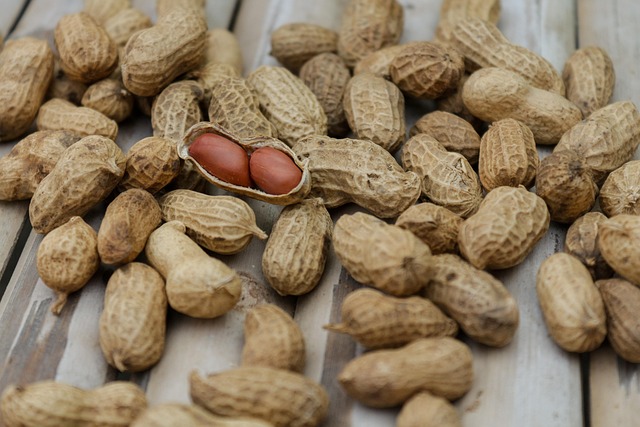When we think of a wholesome eating pattern, fruits naturally emerge as a cornerstone. Their sweet aroma and vibrant colors invite us to explore a world of flavors, but more importantly, they deliver a concentrated dose of vitamins, minerals, and dietary fiber. A diet that prioritizes fruits offers a simple yet powerful strategy to enhance overall health, boost energy, and support long‑term wellness. By weaving a variety of fruits into everyday meals, we create a nutritional tapestry that nourishes both body and mind.
The Role of Fruits in a Balanced Diet
Fruits occupy a distinct niche in the food pyramid: they provide natural sugars that satisfy cravings without the refined additives found in many processed snacks. Their high water content aids hydration, while the fiber keeps digestion moving smoothly. When balanced with protein, healthy fats, and whole grains, fruits help stabilize blood glucose levels, reduce inflammation, and promote heart health. A fruit‑rich diet aligns with the World Health Organization’s recommendation of five servings per day, ensuring that we meet essential micronutrient needs.
Nutrient Profile of Common Fruits
- Apples: Rich in fiber and vitamin C, they support immune function and gut health.
- Berries (strawberries, blueberries, raspberries): Packed with antioxidants that combat oxidative stress.
- Oranges: A powerhouse of vitamin C and folate, aiding skin regeneration and cellular repair.
- Bananas: Provide potassium, which regulates blood pressure and muscle contractions.
- Grapes: Contain resveratrol, a compound linked to cardiovascular benefits.
How Fruits Contribute to a Healthy Lifestyle
Beyond nutrients, fruits influence lifestyle in subtle ways. Their natural sweetness helps curb cravings for sugary desserts, reducing excess calorie intake. The fiber content promotes satiety, making it easier to maintain a healthy weight. Moreover, the phytochemicals found in fruit skins, seeds, and pulp offer anti‑inflammatory effects that support joint health and lower the risk of chronic diseases. By choosing a variety of colors, we ensure a broader spectrum of protective compounds, reinforcing the principle that “eat the rainbow.”
Boosting Energy Naturally
Fruits provide quick, clean energy thanks to their natural sugars—glucose and fructose—combined with fiber that slows absorption. This balanced release steadies energy levels throughout the day, making it easier to stay focused at work or maintain intensity during workouts. For athletes, a banana or a handful of berries before training can replenish glycogen stores and improve endurance, while post‑exercise fruit consumption aids in muscle recovery.
Practical Ways to Include More Fruits in Your Diet
Incorporating fruits need not be complicated. Start your day with a fruit‑laden smoothie or yogurt parfait. Replace sugary sodas with sparkling water infused with citrus slices or berries. Add sliced apples or grapes to salads for crunch and natural sweetness. Keep a bowl of mixed fruit on the counter to encourage snacking. Even desserts can become healthy choices: baked apples, peach crisps, or frozen grapes offer sweet satisfaction with minimal processing.
Seasonal and Local Choices
Choosing fruits that are in season not only supports local farmers but also guarantees peak flavor and nutrient density. For example, peaches peak in late summer, while pears are at their best in early fall. Seasonal fruits tend to be more affordable and fresher, which translates into better taste and higher vitamin retention. When shopping, look for a rainbow of colors: deep reds, bright yellows, and vibrant greens.
Overcoming Common Barriers
Many people avoid fruit due to misconceptions about sugar content or perceived inconvenience. The truth is that moderate fruit intake is compatible with most weight‑management plans, and the natural sugars are far healthier than refined sugars. Regarding convenience, pre‑washed fruit packs and fruit‑cutting services can save time. Finally, if you’re sensitive to certain fruits, try alternatives—e.g., swapping mango for papaya—or pair them with protein to minimize digestive discomfort.
Incorporating Fruit into Meals
- Use fruit as a topping on oatmeal or porridge.
- Blend fruit into savory sauces or marinades for meats and vegetables.
- Add fruit slices to wraps and sandwiches for added moisture and flavor.
Balancing Fruit Intake with Other Food Groups
A healthy diet is not fruit‑only; it requires balance. Pair fruits with proteins such as nuts, seeds, or lean meats to create a meal that satisfies both hunger and nutritional needs. Incorporate healthy fats—avocado or olive oil—into fruit salads for a satisfying contrast. Whole grains complement fruit by adding sustained energy and additional fiber. This balanced approach ensures that the diet remains varied, preventing nutrient gaps and maintaining a sustainable lifestyle.
Monitoring Portion Sizes
While fruit is beneficial, portions matter. A general guideline is to aim for two servings of fruit per day for adults, which equates to roughly one medium fruit or a cup of berries. Monitoring portion sizes helps keep calorie intake in check and prevents the potential spike in blood sugar that can come from overconsumption. Using your hand as a reference—an apple the size of a fist, a banana about the width of your palm—provides a quick visual cue.
Conclusion: A Fruitful Path to Wellness
Embracing a fruit‑rich diet is a simple yet profound step toward a healthier lifestyle. Fruits deliver essential vitamins, minerals, fiber, and antioxidants, all while offering natural sweetness that satisfies cravings without excess calories. By integrating diverse fruits into daily meals, balancing them with proteins, fats, and whole grains, and staying mindful of portion sizes, individuals can experience increased energy, improved digestion, and reduced risk of chronic disease. The journey to wellness need not be complicated—often, it begins with the humble, delicious fruit on your plate.



